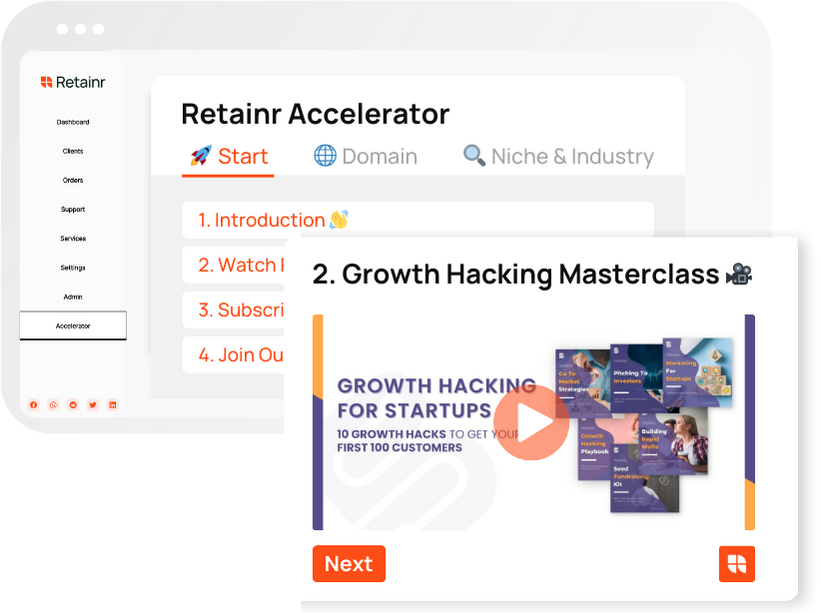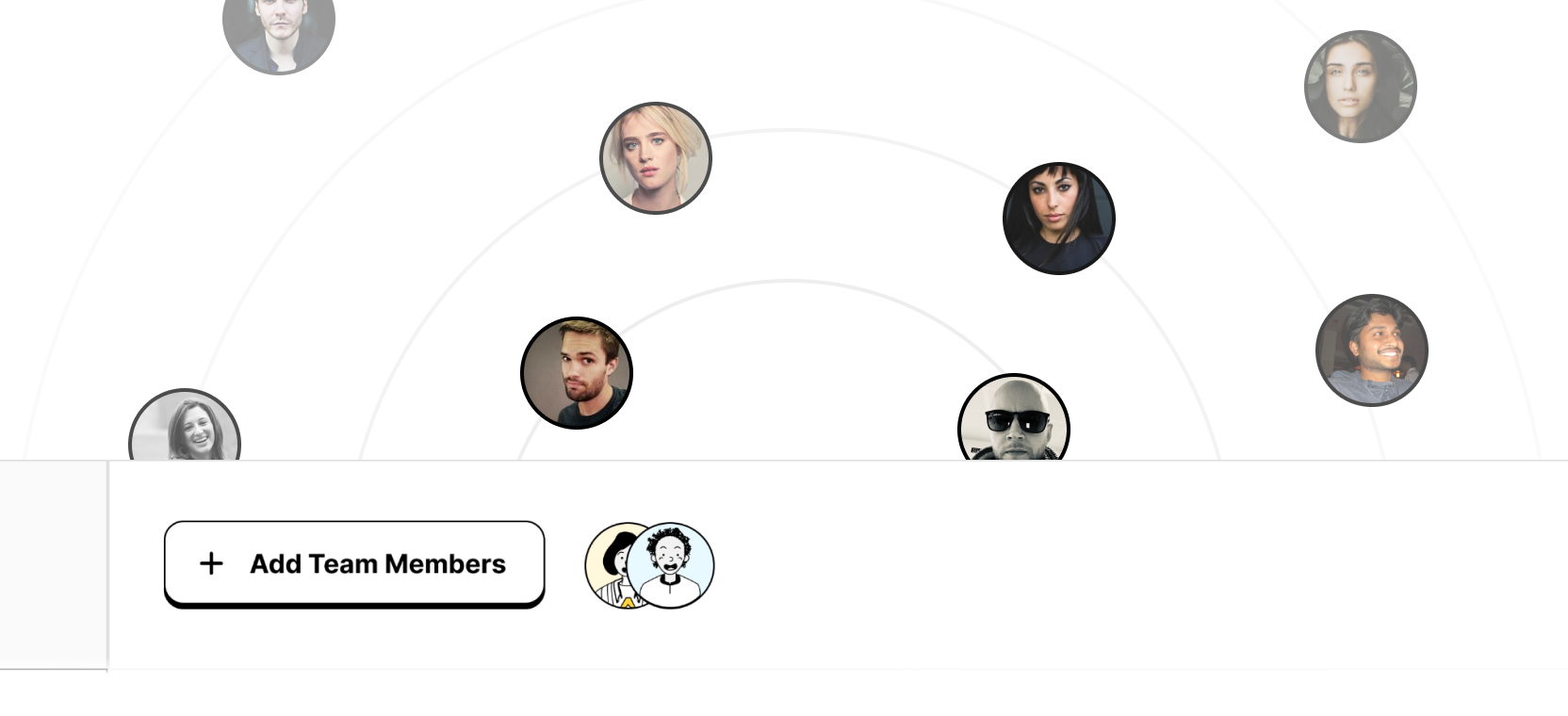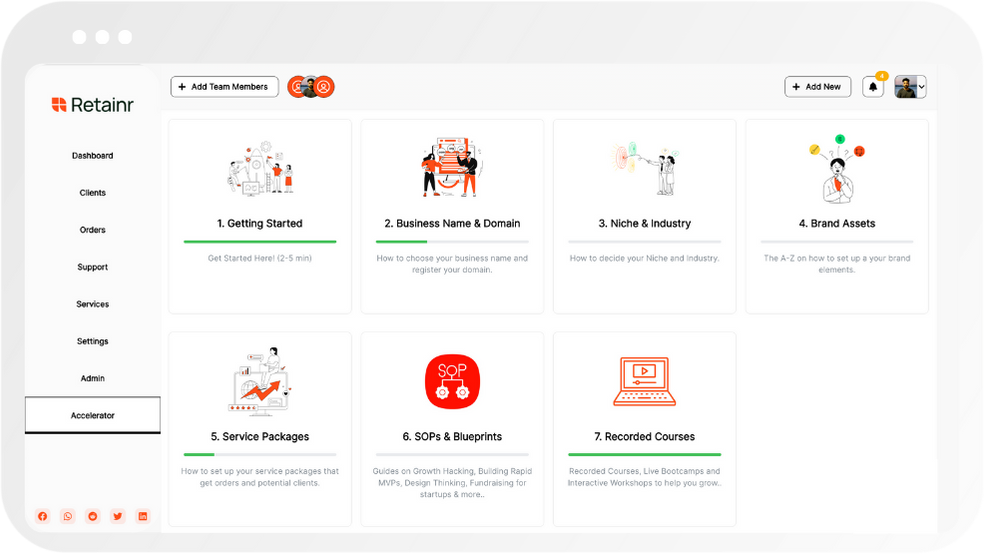
How To Create a Professional LinkedIn Profile
Build with Retainr
Sell your products and services, manage clients, orders, payments, automate your client onboarding and management with your own branded web application.
Get Started1. What are the initial steps to create a professional LinkedIn profile?
First Steps for Setting Up a Professional LinkedIn Profile
Opening a professional LinkedIn account begins with a few initial steps. To begin, visit the LinkedIn website and sign up with your personal and professional information. After that, pick a username that is professional, easy to remember, and unique to you. Lastly, create a strong password that includes a combination of characters, numbers, and symbols for optimum security.
Before you can fully seal your professional presence on LinkedIn, it is advisable to do the following:
- Your profile photo should be professional, clear and reflect your core professional identity.
- Make your headline standout by summarizing your professional brand in a single line.
- Use the summary section to explain your professional journey and aspirations.
Customizing your LinkedIn Profile
To create a professional LinkedIn profile, there are several sections you need to fill out with detailed information. They include:
| Section | Description |
|---|---|
| Experience | List your work history, including your roles, achievements, and the organizations you have worked for. |
| Education | Include your academic achievements, starting from high school to the highest level of education attained. |
| Skills | Add a list of your professional skills, including both hard and soft skills. |
| Achievements | Create a detailed list of all your professional achievements, projects, and other accomplishments. |
Making Your Profile Visible
Lastly, make sure that your LinkedIn profile is visible to all users. This will enhance your professional network and create potential opportunities. In your LinkedIn settings, ensure that 'Let recruiters know you’re open to opportunities' is switched on, so that hiring managers can find your profile more easily. Also, don't forget to include a link to your LinkedIn profile on your resume or CV. Additionally, consider creating personalized LinkedIn URL, as it enhances the visibility and accessibility of your profile.
2. How do I present my skills and experiences effectively on LinkedIn?
Presenting Skills Effectively on LinkedIn
To effectively present your skills on LinkedIn, ensure they are listed prominently in your 'Skills & Endorsements' section. Be precise and specific about each skill you include, to highlight your unique capabilities to potential employers or contacts. Below is a simple guideline to follow:
- Include pertinent skills related to your field of career.
- Order your skills based on their relevance, starting with your most critical capabilities.
- Seek endorsements from colleagues and associates who can vouch for those skills.
Highlighting Experiences Effectively on LinkedIn
Your experiences should not only be a chronicled list of your past jobs. Rather, they should summarize key roles, achievements, and learned skills from each job, project, or volunteer activity you've done. Here are some pointers:
- Use bullet points or succinct sentences to detail specific tasks or projects completed in each role.
- Sprinkle in keywords relevant to your job industry to increase discoverability of your profile.
- Quantify achievements whenever possible to lend credibility to your accomplishments.
Example of a LinkedIn Experience Section
Below is a simplified example of how to present your professional experience on LinkedIn in HTML table format:
| Job Title | Company | Duration | Description |
|---|---|---|---|
| Senior Software Engineer | XYZ Corporation | 2018 - Present | Managed a team of developers to deliver five major software projects, improving company efficiency by 20%. |
| Software Engineer | ABC Enterprises | 2015 - 2018 | Developed three mobile applications, contributing to a 15% increase in company revenue. |
3. How should I customize my LinkedIn URL for a professional profile?
Customizing Your LinkedIn Profile URL
Altering your LinkedIn profile URL is simple, yet effective step to create a professional LinkedIn profile. Following the recommendations below, you can transform the default LinkedIn URL into a more personalized, professional, and memorable link.
Steps to customize LinkedIn URL
- Navigate to your profile page by clicking the 'Me' icon at the top of your LinkedIn homepage.
- Click 'View profile'.
- On your profile page, click 'Edit public profile & URL' on the right.
- Under 'Edit your custom URL', click the 'Edit' icon next to your public profile URL.
- It will be a URL that includes www.linkedin.com/in/ followed by a string of random numbers and letters. Change it to your full name or as close as you can get if it's already taken. Stick to lower case, with no spaces, symbols or special characters.
- Click 'Save' to save changes.
Best practices for custom LinkedIn URL
While customizing your LinkedIn URL, consider the following best practices:
| 1 | Use Your Full Name: | If possible, your URL should be your first name followed by your last name. |
| 2 | Keep It Simple and Professional: | Avoid using nicknames, titles or any string of numbers unless absolutely necessary. |
| 3 | Consider SEO: | Using your full name in the URL will help your LinkedIn page appear in search results when someone Googles your name. |
4. What makes a compelling LinkedIn profile headline?
Compelling Profile Headline Elements
A compelling LinkedIn profile headline must include three critical elements to set a strong impression on the viewers. Firstly, it should clearly communicate your immediate career 'value proposition,' essentially answering 'what can you do?'. Secondly, it should include any unique aspects about your professional position or experiences, answering 'what makes you special?'. Lastly, it should indicate your career aspirations or future goals, effectively answering 'where are you headed?'.
Examples of Effective Headlines
| Career Spheres | Value Proposition | Unique Aspects | Aspirations |
|---|---|---|---|
| Marketing | 'Innovative Strategist' | 'With 15+ Years Experience in Entertainment Industry' | 'Aiming for Greater Challenges' |
| Finance | 'Well-versed in Risk Management' | 'Specialized in Emerging Markets' | 'Seeking International Opportunities' |
Strategies to Craft a Compelling Headline
- Be specific: Identify the most important elements of your professional track to share in your headline. Highlight your special skills or experiences.
- Emphasize your value: Reflect on your career achievements. What skills, experiences or talents make you valuable? Use language that effectively showcases this.
- Use keywords: Understanding what recruiters in your industry are searching for can help you select the right words and phrases.
- Be forward-facing: Mention your future goals or aspirations. This demonstrates ambition and career-oriented thinking.
5. What should I include in my LinkedIn summary to make it professional?
Content for Your Professional LinkedIn Summary
Your LinkedIn summary should be thoughtfully crafted as a comprehensive yet concise introduction, which guides the visitor through your professional life. Here are the key elements to include in your summary:
- Current position and role.
- Relevant skills and expertise.
- Accomplishments or results you’re proud of.
- Career goals and objective.
- Contact information.
Structure for an Impressive LinkedIn Summary
Structure plays a vital role in summarizing your professional life on LinkedIn. It lets you answer who you are, what value you provide, and how an entity benefits from that value. This structure will make your summary look polished and professional:
| Paragraph | Content |
|---|---|
| First | Brief introduction about who you are (role, industry, etc.) |
| Second | List of your key skills, experiences and accomplishments |
| Third | Your career objective and future goals |
Importance of Keywords in Your Summary
To enhance your discoverability and reach on LinkedIn, it's essential to use relevant keywords in your summary. The correct use of keywords ensures your profile is visible to the right recruiters and industry professionals. This will also improve your ranking in search results. Here are some suggestions:
- Include jargon and buzzwords specific to your industry and role.
- Include soft skills and hard skills that match your experiences.
- Try to naturally incorporate these keywords in your story, without appearing as 'keyword stuffing'.
6. How should I arrange my employment history and education on my LinkedIn profile?
Arranging Employment History
The employment history section on your LinkedIn profile is a crucial part as it demonstrates your experiences, accomplishments and professional trajectory. It should be arranged in reverse chronological order, which means listing your most recent job first and then proceeding backwards in time. Each job entry should include:
- Company name
- Job title
- Time frame (from – to)
- Description of responsibilities and achievements.
Remember to include relevant keywords in your job descriptions to make your profile searchable for recruiters.
Arranging Education
Like your employment history, your education should also be arranged in reverse chronological order starting with your most recent degree or certification. For every degree or certification you’ve achieved, be sure to include:
- The name of the institution
- The degree or certificate earned
- The dates of attendance
- Any major or minor specializations
| Education | Field of Study | Dates of Attendance |
|---|---|---|
| University of XYZ | Bachelor of Arts in English | Sept 2016 - May 2020 |
| ABC Community College | Associates Degree in General Studies | Sept 2014 - May 2016 |
Adding courses, honors, and scholarships is optional, but can provide additional insights into your academic achievements.
7. What types of professional photos should I use for my LinkedIn profile?
Choosing the Right Professional Photos for Your LinkedIn Profile
Images are the vitally important first impression on any online professional profile. On LinkedIn, you have two opportunities to showcase yourself through photos: the profile photo and the cover photo. The right photos can make a huge difference in how you're perceived, so it's critical to select them thoughtfully.
Your profile photo should be a professional headshot that clearly shows your face. It should meet the following criteria:
- Taken in good lighting
- High-resolution and clear
- Professional dress according to your industry standards
- Neutral or uncluttered background
- Recent and representative photo
Beyond the profile photo, you also have an opportunity to personalize your profile with a cover photo. Unlike your profile photo, your cover photo doesn't have to be an image of you. However, it should still serve your professional image. Consider what story you want to tell about your professional identity. Here are some guidelines:
- Related to your industry
- Supporting your brand message
- Eye-catching and high-resolution
Getting the Most from Your LinkedIn Photos
Once you have the right photos, it's essential that you use them correctly. Using the right size for your photos ensures that they appear clear and professional. Here are the recommended dimensions for LinkedIn photos:
| Photo Type | Size |
|---|---|
| Profile photo | 400 x 400 pixels |
| Cover photo | 1584 x 396 pixels |
These dimensions are optimal for viewing on both desktop and mobile platforms. Remember to keep your personal brand and identity in mind when choosing and using your photographs. Take the extra time to invest in quality, professional photos–it's worth it for the impression they'll make on your professional network.
8. How do I make my LinkedIn profile visible to recruiters or prospective employers?
Making Your LinkedIn Profile Visible to Recruiters and Prospective Employers
The visibility of your LinkedIn profile is crucial for attracting potential employers. To ensure that your profile appears in recruiters' searches, here are some tips:
- Turn on the "Let recruiters know you're open" feature: This can be found in the 'privacy' settings under the 'Job Seeking Preferences' section. After turning it on, your profile will be flagged to recruiters searching for candidates with your qualifications.
- Public Profile Settings: Make sure your entire professional profile is public. The 'Public Profile' feature is under 'Edit My Profile'. Switch it to 'Public' to let recruiters easily find you.
- Keywords: Include relevant skills, areas of expertise and certifications in various sections of your profile including the 'Headline', 'About', and 'Experience' sections. This helps in increasing your visibility when recruiters search for these keywords.
Increasing Your LinkedIn Profile Visibility
While making your LinkedIn profile visible, it's also important to improve its appearance and make it stand out. Below are the steps to achieve this:
- Profile Picture: A professional and updated profile picture can give a good first impression. LinkedIn profiles with pictures are more likely to be viewed by recruiters.
- Customize your URL: This makes your profile look more professional and makes it easier for others to find and share your profile.
- Seek Recommendations and Endorsements: Having recommendations from colleagues, instructors, or bosses enhances your credibility. Also, endorsing others for their skills can prompt them to return the favor.
Tracking Profile Views
| Feature | Description |
|---|---|
| Who Viewed Your Profile | This feature shows you who has viewed your profile in the last 90 days, and can provide helpful insights about those interested in your profile. |
| Search Appearances | This tool shows you where you appeared in search results, who found you, and the keywords used to find your profile. |
9. How can I use keywords to optimize my LinkedIn profile for searches?
Using Keywords for Optimization
In order to optimize your LinkedIn profile for searches, it's vital to incorporate relevant keywords throughout your content. LinkedIn, like other search engines, uses keywords within your profile to determine its relevance in search results. Here are the core areas to embed your keywords for optimal visibility:
- Headline: The headline serves as your professional tagline on LinkedIn. It is crucial to include main keywords related to your work or academic experience. For instance, if you are a Data Analyst, ensure you include that exact term in your headline.
- About section: This is your chance to tell your story while skillfully weaving your keywords into the text. Throw light on your skills, strengths, and previous experiences related to your role or industry.
- Experience section: Here, place your keywords naturally within the job descriptions of your past and current roles. Provide detailed bullet points explaining your responsibilities and achievements, using your keywords where they logically fit.
Exploiting Skills and Endorsements
Another great place to optimize your profile with keywords is the Skills and Endorsements sections. These areas are where you can effectively showcase your proficiency and allow your connections to endorse you for them:
| Section | Usage |
|---|---|
| Skills: | Add a comprehensive list of your professional skills here, each serving as a potential keyword. For instance, 'Content Writing', 'SEO', 'Web Development', etc. |
| Endorsements: | Endorsements highlight the skills for which you have been recognized by your LinkedIn connections. Your profile visitors can see these endorsements, thereby enhancing your professional credibility. |
Keyword Usage Best Practices
Keep in mind, relevance is crucial when choosing your keywords. Keywords must always be applicable to your work, industry, or desired role for them to yield successful search results. Lastly, it’s essential to remember that stuffing your profile with keywords can be counterproductive. Here are a few best practices to consider:
- Your headline should portray your professional identity and not be stuffed with keywords.
- Sprinkle your keywords throughout your About and Experience section in a meaningful, coherent way.
- The skills you list should reflect your actual abilities and expertise, rather than merely serving as keyword placeholders.
10. What is the importance of recommendations and endorsements on a LinkedIn profile?
The Importance of Recommendations on LinkedIn
Recommendations on LinkedIn are an essential component of your professional profile. These serve as references for potential employers, highlighting your professional capabilities and experiences. They add a layer of trust, credibility, and authenticity to your account. There are several reasons why recommendations are vital:
- Exhibits social proof: Recommendations exhibit social proof of your abilities and work experiences, positioning you as a competent professional in your field.
- Highlights skills: They provide an opportunity for your colleagues, managers, or clients to highlight your skills, making your profile more attractive.
- Elevates brand: Positive recommendations can vastly improve your personal brand, making you a more attractive candidate.
The Importance of Endorsements on LinkedIn
LinkedIn Endorsements allow your connections to recognise your skills and expertise. Like recommendations, endorsements can significantly influence your LinkedIn presence. Here are a few reasons why endorsements hold importance:
- Validates abilities: When your connections endorse you, it validates and reinforces the skills you have listed on your profile.
- Increases visibility: Having numerous endorsements can increase your profile visibility in LinkedIn search results for specific skills.
- Promote trust: Potential employers or business partners are more likely to trust your abilities when they see others endorsing you.
Comparing Recommendations and Endorsements
While both recommendations and endorsements are valuable, they serve different purposes and hold varying levels of weight. To understand their differences better, you can refer to the table below:
| Features | Recommendations | Endorsements |
|---|---|---|
| Source | Generally given by colleagues, managers, clients. | Given by anyone in your connection list. |
| Impact | Higher because it requires effort and thought to write a recommendation | Lower because it’s very simple to endorse someone |
| Value | Commands higher credibility because of the detailed nature of recommendations | Can increase value through sheer quantity |
Conclusion
Step-by-Step Guide to Creating a Professional LinkedIn Profile
LinkedIn is an essential platform for building a professional image and enhancing your career growth. Here is a simple guide on how to create a professional LinkedIn profile.
Define Your Professional Objective
The first step is to define your objective. What is it that you intend to achieve? This should then guide you in every other detail you provide in your profile.
Choose the Perfect Profile Picture
Your profile picture is your first impression. Make sure it showcases you as the professional you are.
Write a Killer Summary
Your career summary should be short, precise and engaging. Remember to include all your important achievements.
Detail Your Job Experience Accurately
Clearly articulate your roles and responsibilities in each of your previous jobs. use bullet points for ease of reading.
Include Your Educational Background
Under the education section, add the schools you attended, your major, and any relevant achievements and extracurricular activities.
Showcase Your Skills
Highlight your skills and get endorsements from your connections. These serve as social proof and increase your credibility.
Update Regularly
Keep your LinkedIn profile up-to-date with the latest achievements and experiences. This shows you’re focused and proactive.
Companies, freelancers and entrepreneurs looking to ease the process of selling, managing clients, orders, and payments, can take advantage of a cutting-edge tool called Retainr.io. This whitelabel software solution offers unmatched convenience and efficiency in running your business. Try Retainr.io for a hassle-free business management experience.
Boost Your Agency Growth
with Retainr Accelerator
Uncover secrets, strategies, and exclusive blueprints to take your agency's growth to the next level — from marketing insights to effective presentations and leveraging technology.

SOPs, Cheatsheets & Blueprints
Leverage 50+ SOPs (valued over $10K) offering practical guides, scripts, tools, hacks, templates, and cheat sheets to fast-track your startup's growth.
Connect with fellow entrepreneurs, share experiences, and get expert insights within our exclusive Facebook community.
.jpg)

Join a thriving community of growth hackers. Network, collaborate, and learn from like-minded entrepreneurs on a lifelong journey to success.

Gain expertise with recorded Courses, Live Bootcamps and interactive Workshops on topics like growth hacking, copywriting, no-code funnel building, performance marketing and more, taught by seasoned coaches & industry experts.

.jpg)

.jpeg)


